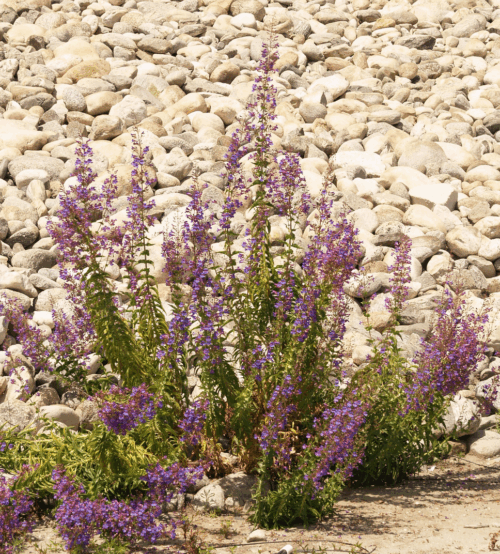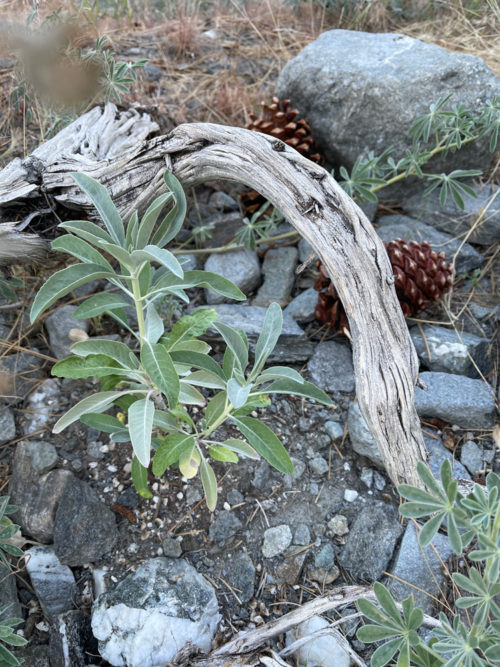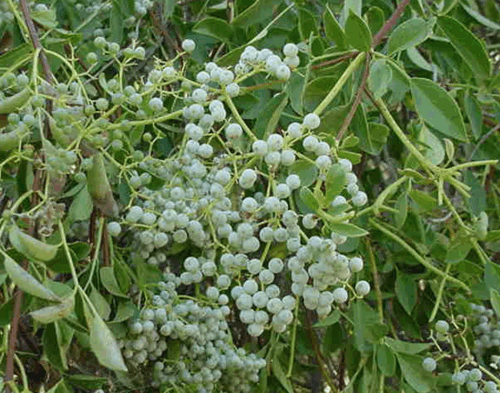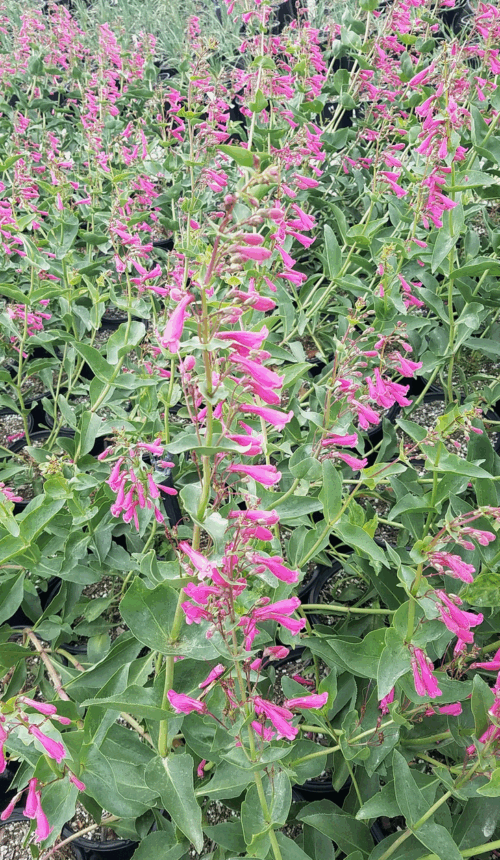Rhus ovata, commonly known as sugar bush or sugar sumac, is a shrub or small tree found growing in the canyons and slopes of the chaparral and related ecosystems in Southern California, Arizona, Baja California and Baja California Sur. It is a long lived-plant, up to 100 years, and has dense evergreen foliage that make it conspicuous. It is closely related to and hybridizes with the lemonade sumac.
Sugar Bush (Rhus ovata)
$12.00
1 in stock (can be backordered)
Description
From wikipedia:
“Rhus ovata, commonly known as sugar bush or sugar sumac, is a shrub or small tree found growing in the canyons and slopes of the chaparral and related ecosystems in Southern California, Arizona, Baja California and Baja California Sur. It is a long lived-plant, up to 100 years, and has dense evergreen foliage that make it conspicuous. It is closely related to and hybridizes with the lemonade sumac.
Ecology
The flowers bloom from March to May, and a variety of bee species may be seen visiting the flowers, including the Western honey bee and the black-tailed bumblebee, along with smaller bee genera such as Andrena, Perdita, Nomada, Evylaeus. After pollination, fruits mature over the summer and may be collected from July to August. They generally will fall onto the ground, forming a seed bank in the soil, but many will also remain on the plant into fall. Seeds may be consumed by the larvae of eurytomid wasps.
Ethnobotany
Rhus ovata was used by the Cahuilla to treat colds and coughs, by making a tea with the leaves. It was also used as food, by eating the fresh fruits raw, dried, or ground into mush. The Cahuilla were also reported to boiled flower cluster and consume them. There are unconfirmed reports that Rhus ovata contains urushiol, the chemical irritant in plants such as poison ivy. Rhus plants have been confirmed to contain flavones, cardanols, bichalcones, chemicals which may have antimicrobial properties, and high concentrations of R. ovata extract have been proven to have antibacterial properties that impede the growth of gram-positive bacteria like Staphylococcus, but not gram-negative bacteria like E. coli or fungi.
The Kumeyaay have diverse uses for the plant, including for food, medicine, and as firewood or construction material. They eat the fruits, preparing them in a number of ways. They may be cooked or toasted when ripe, and ground into a meal like pinole. Alternatively, fruits would be made into a tangy drink, using the sugar that forms on the skin, creating a concoction with a sweet and sour taste, similar to lemonade. Medicinal uses of the plant are primarily for treatment of conditions that affect the female reproductive system. The leaves and stems, once cut, are made into a tea, which works as an anesthetic for women going through labor. The same treatment may also be applied to animals going through colic or birth, except with the infusion being made from the leaves.
The seeds are reportedly not edible.
Additional information
| Size | 4", 1 gal, 5 gal |
|---|
Only logged in customers who have purchased this product may leave a review.






Reviews
There are no reviews yet.